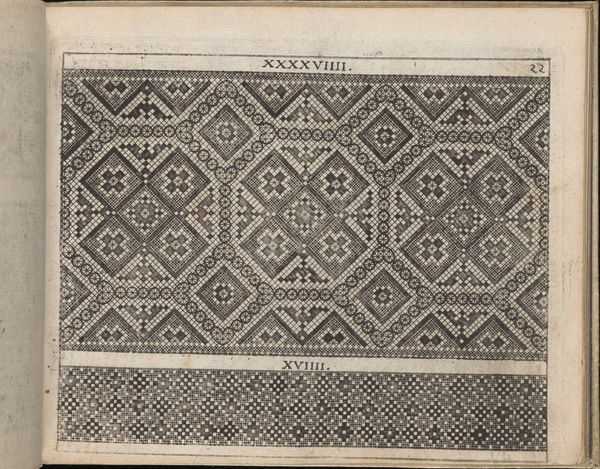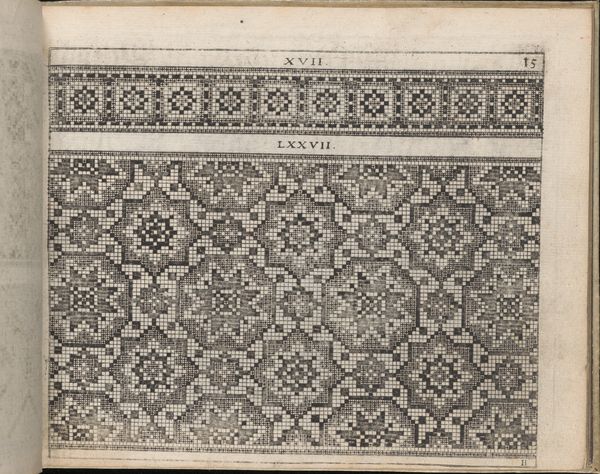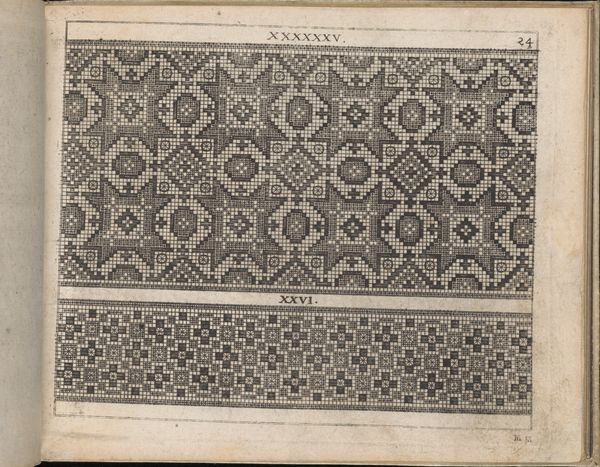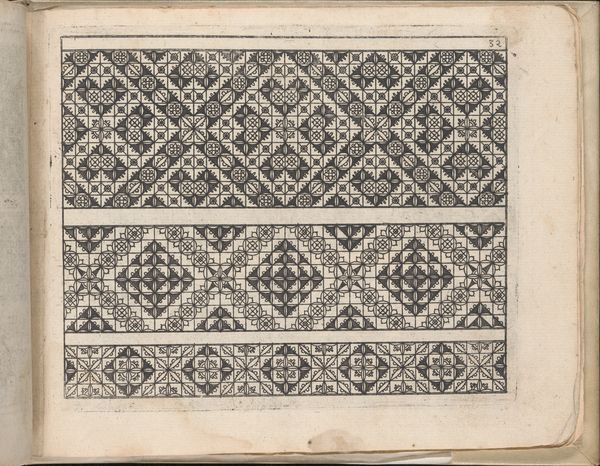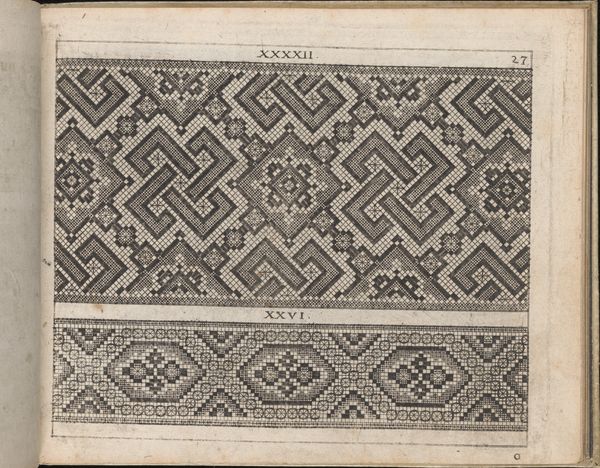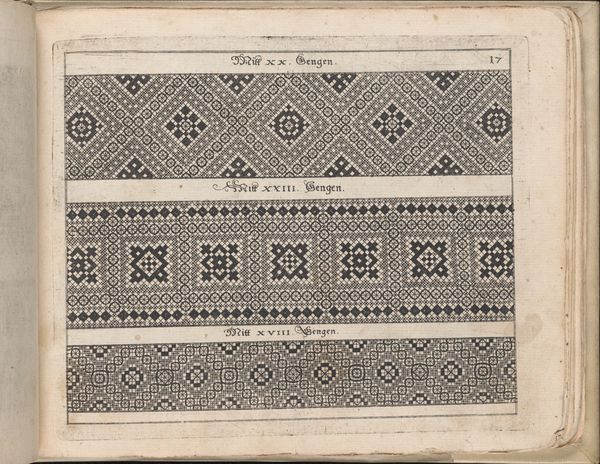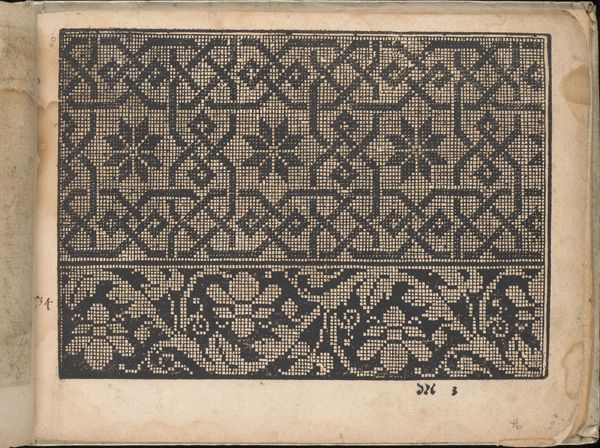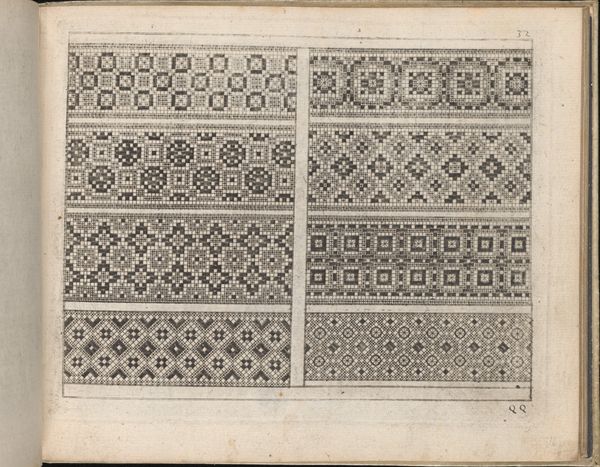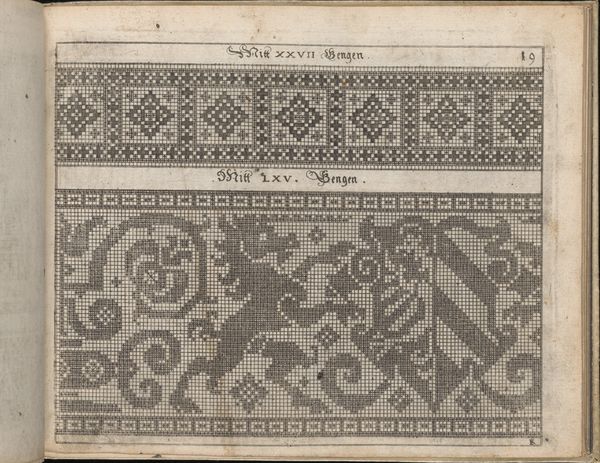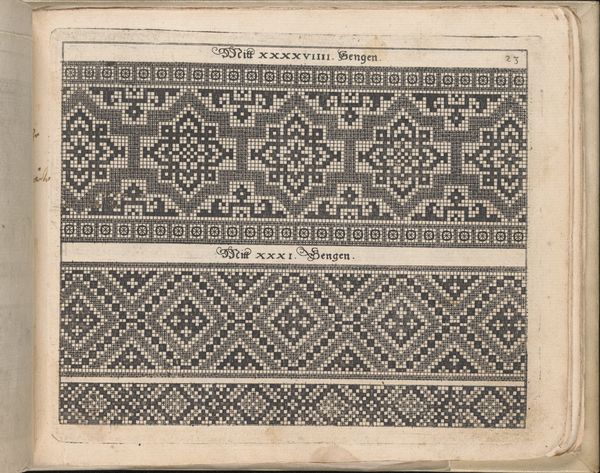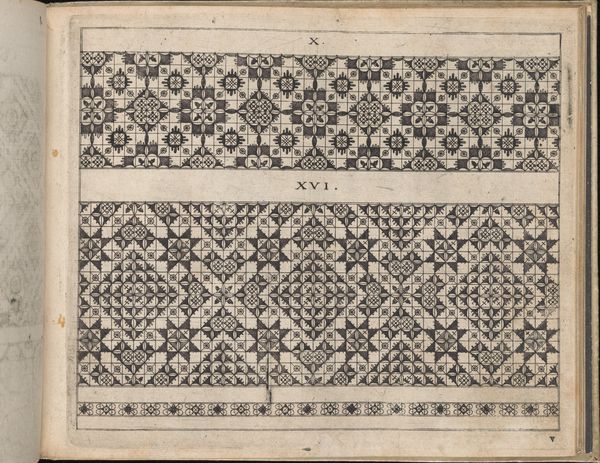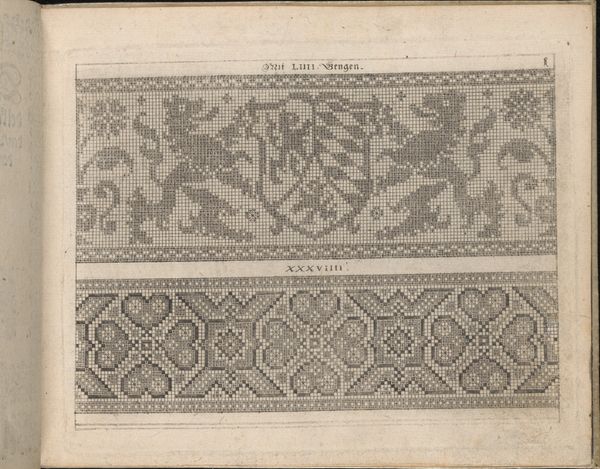
drawing, graphic-art, ornament, print, etching, paper, ink, engraving
#
drawing
#
graphic-art
#
ornament
#
toned paper
#
medieval
#
ink paper printed
# print
#
etching
#
book
#
paper
#
ink
#
geometric
#
engraving
Dimensions: Overall: 5 11/16 x 7 1/16 x 3/4 in. (14.5 x 18 x 1.9 cm)
Copyright: Public Domain
Curator: Here we have Johann Sibmacher’s “Newes Modelbuch in Kupffer (Page 23r),” created in 1604. It’s a print featuring etching, engraving, and ink on toned paper, showcasing intricate geometric patterns. Editor: It's like peering into a medieval computer screen. I can almost feel the rhythm of pixels aligning, or maybe it’s more like a textile blueprint trying to burst off the page. Does that make sense? Curator: Absolutely. Model books like this served as guides for artisans, pattern makers, and embroiderers. These designs were replicated onto textiles, metalwork, and various crafts. Consider the socio-economic context; it speaks volumes about the labor and material exchange of the time. Editor: Oh, definitely! I imagine someone hunched over a piece of cloth, trying to follow this detailed pattern – you get the human story instantly. It's like this page holds the quiet hum of countless unseen hands, replicating this design, transforming it, interpreting it. I wonder about their stories, you know? Curator: It’s important to acknowledge how the materials influence the final outcome. The quality of the ink, the type of paper, and the skill of the engraver all contribute. These aren't just aesthetic choices; they reflect economic considerations and trade networks. Editor: Right! The whole thing has this incredibly restrained energy, this sense of possibility held within a very rigid framework. Makes you wonder how much wiggle room artisans had back then. Or were they encouraged to add a flourish here and there to make it their own, give a bit of personality? Curator: Sources show that individual expression often emerged through the specific materials chosen and the application of the design, considering both resourcefulness and localized production standards. These patterns were meant to circulate widely but materialize distinctly. Editor: What strikes me is how modern the pattern feels, how timeless, really. The eye is pulled in, held for a moment by its intricacies and pushed back by its sheer visual stability. We are reminded it could still be in use! Curator: Considering the meticulous craftsmanship required for this level of detail, one has to appreciate the role this print played in shaping material culture across social strata. Editor: Precisely, and this is why art historical context provides us with a key for an extended and nuanced appreciation.
Comments
No comments
Be the first to comment and join the conversation on the ultimate creative platform.
